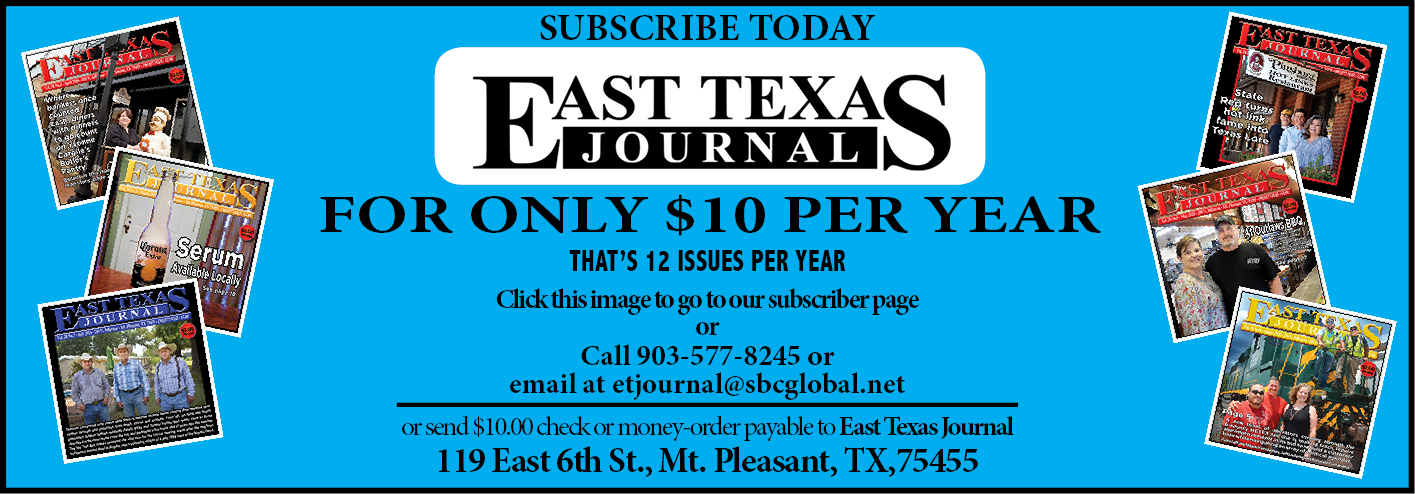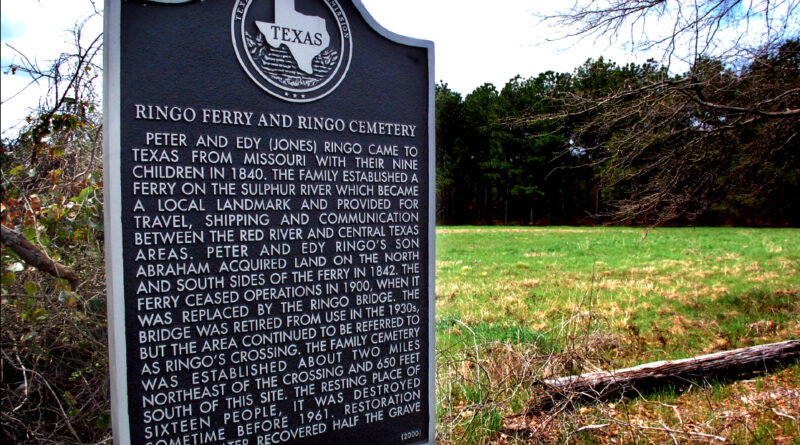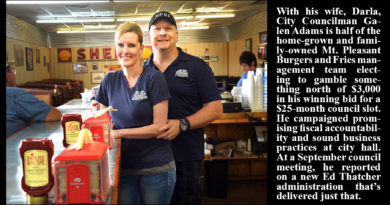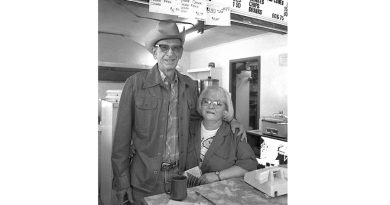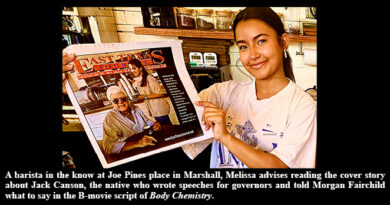1854 news account describes family as ‘passionate, domineering and dangerous’
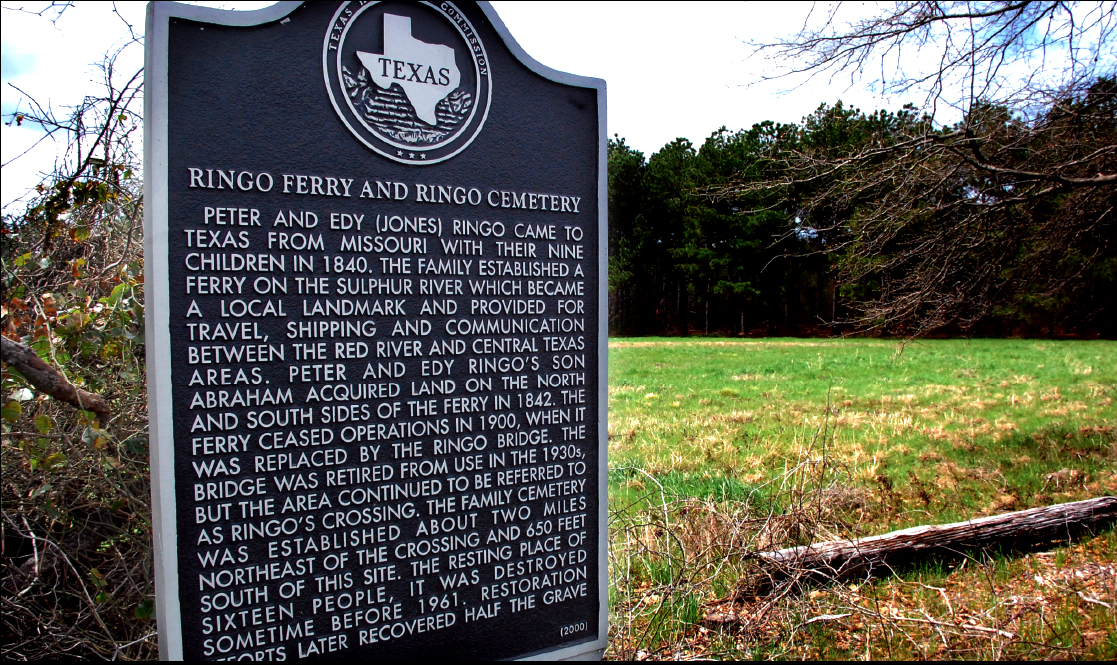
HAGANSPORT – As the crow flies, this is the closest town to the place just downstream of the confluence of the North and South stems of the Sulphur River, where the story of the Ringo Ferry’s 60 years of operation stretches back to the Texas Republic days.
Hungry for settlers after the 1836 war of independence from Mexico, the government of the new Republic offered land grants of 640 acres to a man with a family and half that to single men coming to Texas. By the time he arrived in 1839, Peter Ringo could track his family’s New World lineage back six generations to Jantzen Ringo, one of the Dutchman settling New Amsterdam on Manhattan Island in 1626.
Arriving on the Sulphur with unmarried sons Abraham and James, the family secured title to 1,280 acres with good landings for their ferry on either side of the Sulphur River.
Operating as early as 1840, an 1849 state maps shows the ferry as the crossing on a road beginning in Clarksville and angling west before crossing the river and turning south for Buffalo and Austin.
With his ferry up and running, Peter Ringo built a wagon yard. He built corrals and shelter, a place where emigrants flooding Texas following statehood in 1845 could stop, pen their stock and rest from their travels. Not all coming into the Texas frontier were of genteel disposition and the Ringos responded as required by circumstance.
“They weren’t people to be trifled with,” said Don Easterling, a Hagansport native and author of volumes of local history published by the Franklin County Genealogical Society. “There are lots of sad endings in their tales.”
Sons Abraham and James died before their father was gunned down by a posse hunting two younger sons.
“Peter Ringo,” read the Northern Standard’s October 21, 1854 account of his killing “was an old resident of the county. So far as his dealings hereabout are known, there has been no complaint. But in his own neighborhood, there has been for a long time a dread of the family as passionate, domineering and dangerous.”
Once the largest circulating paper this side of Fort Worth, the Northern Standard was published in Clarksville.
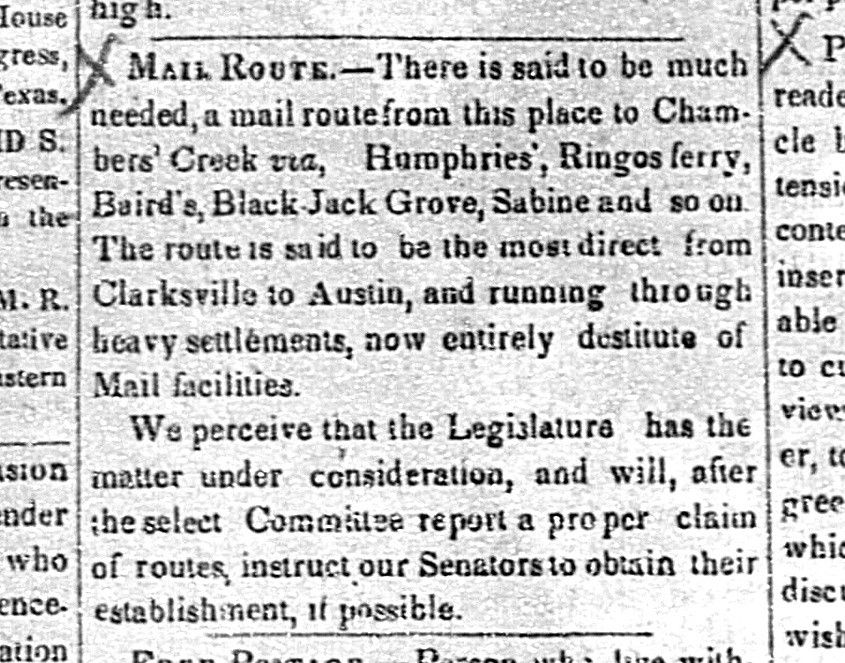
“The Ringo’s are almost legendary,” said Dr. William Barnard, whose research underpins the nuts and bolts family epitaph told on the historical marker northwest of Hagansport on FM 196, 3.5 miles north of Highway 37. “I enjoyed discovering their stories. Even though some are not complimentary, they are always interesting. Peter Ringo was my great great great grandfather.”
Peter Ringo briefly prospered in Texas. Tax rolls from the year he was killed show he owned more than 4,700 acres, Dr. Barnard said.
Part editorial, part news, the account of his death tells of the sheriff previously traveling to the Ringo home hunting Green Caudle, an outlaw wanted on a charge of stealing mules. There were warrants as well, the sheriff said, for two of Peter Ringo’s sons.
Peter Ringo “told the sheriff that whenever he wanted to smell gunpowder he could be gratified by any attempt to arrest his sons.”
So advised, the sheriff departed but returned two weeks later, arriving near sundown with a posse of 15 men. Finding the Ringo men absent and only the Ringo women about, the sheriff “withdrew his men and surrounded the home.”
At dark, Peter Ringo came riding in alone and was confronted by William Powers. As the men exchanged “the customary salutations of civility,” one of the Ringo daughters came from the house with Ringo’s shotgun. Powers warned Ringo against taking the weapon. The lawman shot “as he heard Ringo’s shotgun hammer lock.”
With no witness but the dead man’s daughter, Powers called a member of the posse from cover to pick up Ringo’s gun and see that it was cocked.
A second Ringo daughter “leaped the fence, seized the gun and threatened the approaching members of the posse. Two of the party, however, saw her let down the cocked hammer,” the news account said.
With Peter Ringo dead, the posse gave up its hunt for his sons, “as the place is admirably situated for secretion, the woods dense, thickets numerous and the neighborhood thinly settled.”
The ferry passed to Robert William Ringo, a man who “had two problems, his sons,” Dr. Barnard said.
“Charley Ringo was arrested and stood trial for threatening his own family,” he said. “He was acquitted but left Franklin County. He returned once to visit and announce that he was heading for Mexico. The family heard no more of him.”
Robert Wade Ringo can still be tracked through legal records including the appeal of his murder conviction and a life sentence upheld by the Texas Supreme Court in April, 1894.
“It was a landmark ruling because with the exception of the body of the man believed to have helped Robert Ringo dynamite a ford on the river, the case was built entirely on circumstantial evidence.”
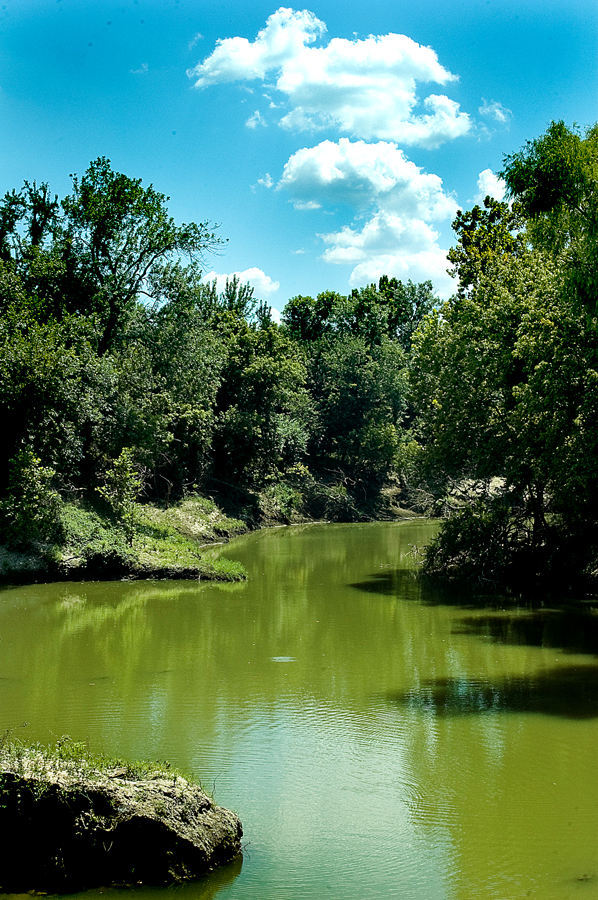
Referred to only as “Bowman” in records of the Southwest Reporter, the dead man had worked as a ferryman for Robert Ringo in the fall of 1892 when a low water crossing that competed with Ringo’s ferry on the Sulphur was dynamited and jammed with logs “causing great indignation expressed by the neighborhood,” the case reads.
The appeal court agreed with trial court testimony suggesting that one motive for the murder was Robert Ringo’s fear of Bowman revealing their destruction of the ford.
Robbery was suggested as a second motive.
Though Bowman no longer worked for him, in February, 1893 Robert Ringo helped Bowman take two bales of cotton to sell at the gin in Paris. Each left the ferry driving a wagon and a team.
The ferryman testified that it was cold and night had settled when shortly before 9 p.m. he heard three shots.
Ten minutes later, Robert Ringo arrived, “appearing troubled.” Riding one mule and leading another, as he warmed by the fire in the ferry house he told of the return trip from the gin and unhitching their teams and riding after their wagons became mired in mud.
Bowman was trailing behind and Ringo said he heard three shots, then was immediately confronted by an armed man who demanded his money, but then strangely allowed him to ride away.
Speaking of Bowman’s money from the sale of his cotton, Ringo insisted that the ferryman search him as he might be a suspect in the shooting.
“Nothing was found on him but a dime and a toothpick,” according to the ferryman.
Leaving the ferry, they quickly found Bowman, shot once in the back, once through the heart, and once between the eyes.
Returning, they crossed the Sulphur to the south side and Robert Ringo rode away at about 10 p.m. to spread the word among neighbors of a killer on the lamb.
Same as the trial court, the Supreme Court’s suspicion was heightened by the three hours that passed before Ringo completed the mile ride to the McAdams home.
Investigators who found leaves and earth disturbed at two sites near the body reasoned that Ringo had buried the money from the sale of Bowman’s cotton at one spot, his weapon in another, then returned to retrieve both during his three hour absence.
“Why would a robber murder one man and not the other?” the court asked, finding no answers for anything beyond theories put forth by the prosecution.
Robert Ringo’s life sentence stood.
Dr. Bernard told an odd story about the 1999 beginning of local research related to his family, finding old timers who remembered tales of the Ringos. He found a man who was initially helpful – when he called a second time, the man’s wife curtly informed him, “He’s not interested in that anymore.”
Dr. Barnard found Franklin County Commissioners Court minutes that made note of the February, 1888 issue of a license setting fares for Ringo’s Ferry. In February, 1900, the court approved funding for a bridge, signaling the end of the Ringo Ferry’s operation on the Sulphur River.